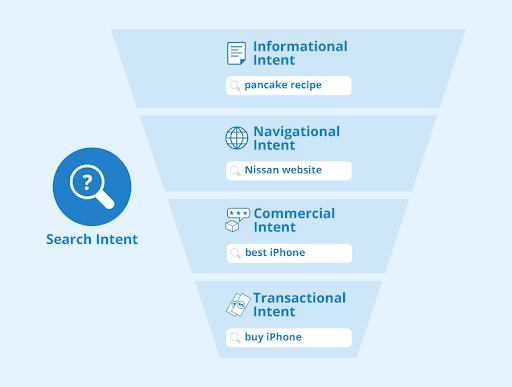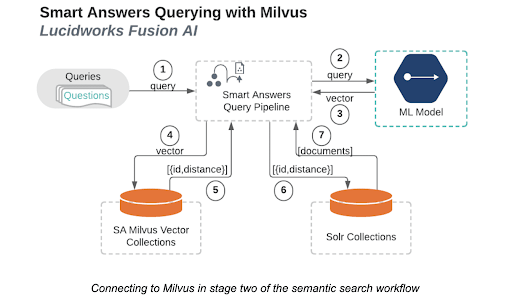What is Semantic Search & How Does it Affect SEO?
Semantic Search is a technique that Google uses to understand the content of articles and recommend it to consumers. Learn how to optimize your content to rank using semantic search.
What do you have to do to get your websites to rank? Find some keywords, stuff them into your content, get as many backlinks as you can, and you’re there. Right?
Well, that’s as far from the truth as it can be. Decades ago, when SEO was relatively new and algorithms were not so advanced, this trick worked. However, now, the search engines have become more user-centric and show results based on intent and context which gives rise to terms such as semantic search.
What is semantic search? How does it affect SEO? What’s the relation between semantic search and SEO? How can you improve your content and optimize it for semantic search?
Well, if these are the questions that come to your mind when you hear semantic search, we have all the answers for you.
In this article, we will cover everything about semantic search so that you can create well optimized content that ranks on the search engines.
Need help selecting a company?
Based on your budget, timeline, and specifications we can help you build a shortlist of companies that perfectly matches your project needs. Get started by submitting your project details.
What is Semantic Search?
Semantic search is a user centric approach of the search engines to show results based on the user’s search intent and context of the keywords they have entered.
The search engine establishes a relationship between intent and context and shows the most accurate results that will give the most value to the users with exact answers and solutions to their search queries.
How Does Semantic Search Impact SEO?
Gone are the times when keyword stuffing and backlinking would get you rankings on search engines. With new algorithms like Hummingbird, etc., the search engines have taken up a more user-centric approach in showing search results based on semantics i.e., intent and context. So, semantic search has a huge impact on your SEO results. Let’s see how!
Keywords Are No Longer the Focus
Earlier, using keywords in your content was enough to get rankings. However, that’s not the case now. Rather than focusing on the keywords, you need to focus on the broad topic of your content and write detailed and descriptive content that clearly answers the user's questions and queries.
When you generate intent based content without keeping all your focus on keywords, you create user-centric content that search engines will identify as useful and rank them.
User Intent is Most Important
When it’s about semantic search, nothing else matters more than user-intent. Once you start generating content that matches user intent, you will automatically see your website starting to rank on the search engines because your content will be more intent-based and thus optimized for semantic search.
Technical SEO is Essential
While the focus is on intent, keywords are still important and you need to focus on other technical aspects on your website as well such as site speed, performance, uptime, interface, navigation, etc., as all these things enhance user experience and that’s what influences semantic search.
Focus is More on User Experience
Semantic search shifts the entire focus of SEO to delivering good user experiences which is why putting value-based content on the website which is easy to read is essential. Moreover, other on-page SEO and technical SEO procedures also become important to enhance the user experience and rank website through semantic search.
7 Effective Tips to Optimize Your Content for Semantic Search
Semantic search has become a priority for SEO as it’s what rankings are based on as per the current algorithms. So, it’s essential that you optimize your content efficiently for semantic search. But how would you do that? Well, here are seven effective tips for the same.
- Focus on topics, not keywords
- Understand search intent
- Use structured data
- Build strong external and internal links
- Use semantic HTMLs
- Use FAQs in your content
- Keep your content simple and easy to understand
Your Focus Must Be Topics, Not Keywords
The times when the content was ranked on the basis of keywords are gone. Now, search engines look at the context, meaning, and intent to rank the content. So, you must focus more on the topic and create content that delivers value to the audience.
You definitely have to add keywords, because they are still important, but rather than just stuffing the keywords, you must cover the topic more exhaustively, including semantically related keywords that match the intent of the audience.
The goal is to understand user intent and create content on the basis of the same.
Understand the Search Intent
Search engines are focused on providing the users exactly what they want and show results on the basis of the intent. So, you need to as yourself what’s the intent of the user behind a certain search query and create your content based on that.

For instance, if a user types “Diabetes”, they don’t want to know just about diabetes, but they want to know the possible treatments, causes, symptoms, and other details as well.
So, covering the topic in broader terms and providing all the necessary information will fulfill the search intent.
Use Structured Data
Structured data organizes your data for the search engines and helps you rank in featured snippets. So, it’s helpful in optimizing your content for semantic search.
You can easily create structured data using Google’s Schema Markup helper or other tools. If you want to learn more about schema markups, you can find three easy schema markups for your website in this blog.
Once you have done schema markup, you must also use a site audit tool to perform a site audit and see how well your schema markup is working.
Build Strong External and Internal Links
External and internal linking are essential to build relevance in your content. When you link your pages to other pages on your website and third-party website, apply different link building strategies, Google sees that the content is related and it helps in rankings when users search semantically related content.
Use Semantic HTMLs
Semantic HTMLs include <header>, <footer>, and <article>. These HTMLs clearly indicate the search engines their meaning and how the text is to be displayed on the web page.
This makes your user interface look neat and content more easily understandable which is essential for good customer experiences.
Use FAQs in Your Content
Adding FAQs to your content helps with semantic search as your website might appear in the People Also Ask section due to FAQs. It’s also essential to add FAQs because it helps answer any related questions and queries which is again important for semantic search.
Keep the Content Simple and Easy to Understand
User experience is most important in semantic search and it’s essential that the users understand what you have written. So, it’s best to know your target audience and write content accordingly in a simple, plain, and easily understandable language so that the readers can quickly grasp the meaning of your content and get their answers.
Are You Ready to Use Semantic Search to Your Benefit?
Semantic search is what works for SEO today given that search engines have become user centric and rank content based on user intent and context. So, you have to optimize your content for semantic search and there are many ways you can do that, as discussed in this article.
Hopefully the tips in this article will help you out in improving your website for semantic search and that you will have the most benefits out of it.
Additional reading
Need help selecting a company?
Based on your budget, timeline, and specifications we can help you build a shortlist of companies that perfectly matches your project needs. Get started by submitting your project details.
